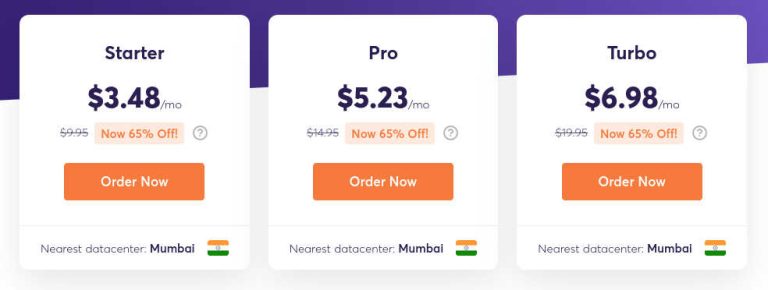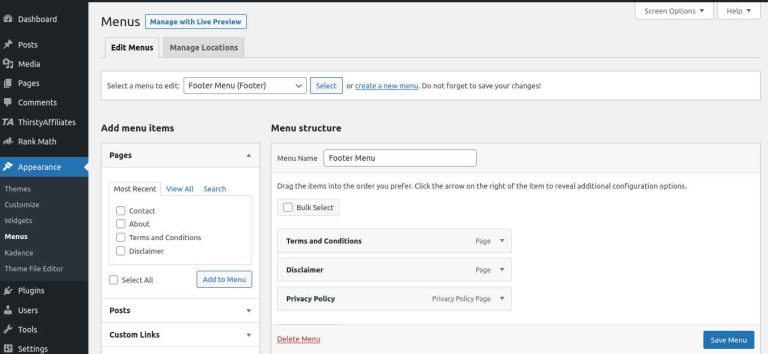How to Start a Car Blog for Your Car Hobby or Business

If you are a car enthusiast, reliably making money from your passion can be a challenge. A blog can be a simple yet fun way to monetize your passion.
Although blogging is not as flashy as other ways to make money online, it is still highly effective. Learning how to blog the right way can open up many opportunities to take your car hobby or business to the next level.
Many people fear getting into blogging because they think it is a lot of work or that there is a lot of competition. However, if you lay the right foundation and are willing to learn how to do things the right way, you will be surprised at what you can accomplish.
In this article, I will give you all the information you need to create a successful car blog. Some of the topics I will cover include:
A quick note: If you want to go straight to the technical steps of setting up your blog, go to my article on setting up your WordPress blog (step by step).
1. What is a Car Blog?
A car blog is a blog where you share your passion and expertise about cars. You can also call it an automotive blog, auto blog, or vehicle blog.
There are several types of car blogs you can start depending on your business or the niche you decide to focus on, for example:
- A car restoration blog. Here, you write blog posts about how to restore old/vintage cars.
- A car detailing blog. Here, you write content on how to clean and take care of your car.
- A car repair blog. Here, you can give tips and advice on how to repair common car problems.
Save Big On Web Hosting


Save Up to 70% by Hosting with ChemiCloud
2. Who Should Start a Car Blog?
Although anyone can start a car blog, you are most likely to see the biggest results from your car blog if:
- You are a car enthusiast. If you have a car hobby, you can use a blog to make money from your passion. You just need to set time aside to write about what you are already doing.
- You own a car business. Many car businesses fail because the owners cannot effectively market their services. Learning how to blog well will give you marketing skills that your competitors will find hard to match.
- You have car-related skills. If you have valuable car skills, you can contribute to society by helping out others who are struggling with problems that you can help solve.
3. How Much Does It Cost to Start a Car Blog?
Setting up your car blog will cost you roughly 75 dollars. This cost includes:
- Webhosting for 1 year ( about $60 a year or $5 a month)
- A domain name for 1 year (for about $15 a year)
If you go with a web hosting company like ChemiCloud, you can get this cost down even further because they often give generous discounts as well as a free domain name (check if a discount is available).
If you have the budget, you can also choose to invest in paid WordPress themes and plugins. This can add $50-100 to your basic costs. For more about this, check out my post on the best WordPress plugins for a new blog.
4. Why Start a Car Blog?
If you are on the fence about starting a car blog or you are worried about all the work you are going to do, it helps to think about what you will gain.
Starting a car blog has many benefits. You can use your blog to
- Market your products and services. If you have a car-related business (such as a car detailing or repair business), you can use your blog to get clients on autopilot. With a blog, you can target particular keywords that will attract the right kind of customer for your business.
- Make extra money. Blogging allows you to target all kinds of monetization methods such as display ads or affiliate marketing. This can bring in a healthy side income to complement income from your business or job.
- Build your brand. If you want to be known as a car expert, you can create content that showcases your expertise in cars. This is especially important if you have a car business or you want to build a career in the automotive industry.
- Share your passion. A blog is a great way to share your passion, knowledge, and expertise about cars with others. You may take these for granted but there is someone out there who desperately needs what you know.
- Network with other car enthusiasts. A blog is a great way to connect with other people who share your passion for cars. You can create lasting friendships with people from all over the world and this can open up travel opportunities.
- Develop skills. Blogging helps you to become better at your automotive skills because you have to constantly learn and explain things to others. You also learn other skills related to digital marketing such as SEO and copywriting.
5. Can You Make Money From a Car Blog?
You can make a decent amount of money from your car blog if you do things the right way.
Blogging in general can be lucrative. According to blogger surveys, a full-time blogger makes an average of $2,500 a month. Top bloggers make over $200,000 a month.
How much you earn depends on a couple of factors such as:
- How good you are at writing content that converts.
- How good you are at getting visitors to your blog (through SEO or social media).
- The type of monetization avenues you target.
If you want ideas on how to estimate your potential blog earnings, check out my post on calculating blog earnings.
6. Examples of Successful Car Blogs
There are plenty of examples of successful car blogs such as Autoblog, Jalopnik, TheDrive, and Electrek. These blogs, however, have large teams of editors and writers behind them.
In this section, I want to give examples of solo car bloggers who have been able to find success in automotive blogging without a large team.
Check out their sites to find inspiration on how you can also create your car blog.
#1. Eric the Car Guy
Eric the Car Guy was started in 2009 by Eric Cook after he lost his job as a mechanic at a dealership. The blog was to complement his YouTube channel which he started around the same time.
In this blog and YouTube channel, Eric covers various aspects of car diagnostics, repair, and restoration As of 2023, his YouTube channel had over 1.7m subscribers.
Eric has dyslexia which presents reading and writing difficulties but despite this, he has been able to create a highly popular blog.
#2. The Humble Mechanic
The Humble Mechanic was started in 2011 by Charles Sanville, a Volkswagen technician and confessed grease monkey.
His blog is a great resource for fixing problems with your car especially if you own a VW or Audi.

In addition to his blog, Charles also has a podcast and a YouTube channel with more than 800,000 subscribers.
In 2017, Charles left his job of 13 years to concentrate on the Humble Mechanic as well as teaching classes to Audi/VW technicians.
#3. Nick’s Car Blog
Nick’s Car Blog was created in 2009 by Nick Roshon, an Audi owner and fanatic, as a way to share content about his Audi.
Nick works full-time as a digital marketing specialist and does blogging as a hobby during his free time. Despite this, his blog receives over 50,000 visitors every month.
His blog has evolved to cover all kinds of automotive-related content including DIY, reviews, and detailing.
7. Steps in Starting a Car Blog (10 Simple Steps)
Starting a car blog is quite simple especially if you have the right steps. Even if you are a tech novice, you can have your blog up and running in less than 30 minutes.
In this section, I will summarize all the important steps you need to take.
I have skimmed over some of the technical parts so that I can keep this article short, but if you want hand-holding through all the technical steps, see my quick-start guide on setting up a WordPress blog.
For now, here are the main steps.
#Step 1: Choose a niche for your car blog
When I say niche, I mean the focus of your car blog. It is what you want you want to write about in your blog.
Examples of car blog niches you can target include:
- Car detailing
- Car repair
- Car accessory reviews
- Car insurance
When choosing your niche, there are a couple of things you should consider, for example:
- What are your goals? Why have you set up the blog? Is it to promote a business, make a side income, or build up your brand? Your approach will be slightly different depending on your objectives.
- Who is your target audience?Who are the potential readers of your blog? Examples include mechanics, DIY enthusiasts, or road trippers.
- What problems do you want to solve? What problems have you faced with your car that others might also face? What solutions can you offer?
- Which skills do you have? Choose a niche that takes advantage of your car-related knowledge and skills.
- What do you enjoy? What about cars do you enjoy and what would you be willing to write about even if you were not paid?
#Step 2: Choose a name for your car blog
It is essential to put in effort to get a good name for your car blog because this can help you build a solid brand. Conversely, a poor name can diminish your brand.
Here are some great tips to help you choose a name for your car blog.
- Use your business name. Do this if you already have a business or are planning to start a business that you would wish to promote.
- Use your name. Do this if you want to build your personal brand as a mechanic or car expert.
- Use a name that is easy to remember. Avoid using misspelled words, special characters, or too many numbers in your blog name or domain name.
- Avoid trademark infringement. Don’t copy someone else’s name or try to piggyback on a company’s success by using a variation of their name. You can get sued and lose the right to use the name.
As you choose your blog name, you can also design your logo to match your brand. You can create a simple logo using a tool like Visme’s logo maker. Don’t spend too much time on this; you can always change it in the future.
#Step 3: Choose a blogging platform
If you intend to make money from your blog, it is important to choose the right blogging platform.
While it can be tempting to choose a free blogging platform, these often lack many features and this will hamper the growth of your blog.
The best blogging platform for a Car blog
To give your blog the best chance of success, I would suggest going with a self-hosted blog on WordPress (WordPress.org not WordPress.com) because:
- It is very popular. The majority (40%+) of all websites online use it.
- It is free. This significantly cuts down the cost of starting a blog.
- It is open-source. This means you don’t have to worry about the platform shutting down your blog.
- It is highly customizable. You customize WordPress to your liking using themes and plugins. For example, you can turn it into an online shop, forum, or membership site.
- There are plenty of WordPress tutorials available. You can find all you need to create and troubleshoot a WordPress website online.
In #Step 6, I will explain how to install and customize WordPress.
#Step 4: Choose a web hosting company for your car blog
A web hosting company will host your blog and make it available online.
You should choose the best web hosting company you can afford because hosting impacts many factors such as page loading speeds, security, and availability.
Before you purchase hosting, check for ratings on user review sites like Trustpilot or Hostadvice.
Here are some decent web hosting companies you can try.
- ChemiCloud. This company has high ratings on many online platforms mainly because it offers excellent customer service at an affordable price. Check the current price.
- Hostinger. This is popular because of its affordability, so if you are on a budget, consider this option. Check the current price.
- Bluehost. This company is a well-known brand in the web hosting space with a relatively good track record. Check the current price.

If you are new to blogging and you want to avoid a lot of the headache that comes with web hosting, I would recommend going with ChemiCloud because they:
- Are highly rated. They have one of the highest ratings I have seen for a web hosting company (A full 5-star rating on both Trustpilot and Hostadvice).
- Are affordable. When discounted, their pro-plan costs about $4.79 while their renewal price costs $15.95. They also have promotions that can bring down this cost even further. Check for a promotional price.
- Have great features. Some standout features include 30GB NVME SSD drives, an extra long 45-day money-back guarantee, and a generous 350,000 inodes.
- Have plenty of free incentives such as a free domain name, free website migration, free SSL certificate, and a free CDN.
To see all the features, freebies, and costs associated with ChemiCloud, click here.
#Step 5: Register your domain name and sign up for hosting
Once you have chosen the web hosting company you like, go ahead and sign up. This is a fairly straightforward process and it should take you less than 10 minutes.
For most web hosting companies, here are the main steps you will follow.

- Choose your preferred web hosting package. If go with ChemiCloud, they have three options (Starter, Pro, and Turbo). The pro package is sufficient for most blogging tasks.
- Register your domain name. Check to see if your preferred domain name is available. Register it if it is available. If not, choose another name. If you are on ChemiCloud, you get a domain name for free otherwise you will have to pay about $15.
- Fill in your account details. These are required for making the purchase. Ensure that you give your correct contact details so that they can send you the login details.
- Choose a data center. Select a data center that is closest to where the majority of your visitors will come from.
- Select extras. Enable the domain privacy protection so that your private information is kept out of the Whois data registry. This will prevent a lot of spam calls and emails.
- Make the purchase. When buying hosting, you often get bigger discounts when you buy for a longer period. If you can afford it, go for 3 years to lock in your discount price.
#Step 6: Install and configure WordPress
After you have completed the purchase process, the web hosting company will send your login details via email.
You are now ready to install WordPress. If you are on ChemiCloud or any other host that uses cPanel, you can install WordPress with one click. Log in and navigate to the softaculous installer. Use this to install WordPress.
After you install WordPress, you need to configure it by:
- Updating WordPress themes and plugins.
- Setting a permalink structure. I would suggest using the ‘post name’ option.
- Deleting any plugins that you will not need (such as Hello Dolly).
- Installing an SSL certificate. You can use the free Let’s Encrypt SSL.
This short video will take you through the process of configuring WordPress.
#Step 7: Install WordPress plugins
WordPress plugins are add-ons that you add to your WordPress website to increase its functionality. For example, you can add plugins to help improve page loading speed and security.
However, be careful not to add too many plugins because they can slow down your site and present security issues.
If you have a new blog, here are some important plugins you should consider installing.
- A speed optimization plugin to help improve page loading speeds. I would recommend WP Rocket.
- A backup plugin to assist you in making regular backups of your blog. I would recommend WPVivid.
- A design plugin to help you design your blog. I recommend GenerateBlocks.
For information on other important plugins you should consider, see my article on the most important plugins for a new blog.
To add a plugin, go to your WordPress dashboard, navigate to ‘Plugins’ and click ‘Add New’

#Step 8: Design your blog
These days, you don’t have to be an expert to create beautiful WordPress websites. There are plenty of WordPress themes and plugins that make the entire design process a breeze.
A great WordPress theme you can try is the GeneratePress theme. Use this together with the Generate Blocks design plugin.

GeneratePress is light, secure, and fast meaning that it will not slow down your website or hog system resources. The premium version is also competitively priced at $59 a year and is packed with features (check current price and features).
They also have a free version you can use if you are on a budget.
If you choose to use GeneratePress, you can check out this YouTube video that will show you how you can use it to design a beautiful website.
#Step 9: Create important pages
You will need to create a few important pages for your blog. Blog pages are used to display information that does not change often.
Here are some of the blog pages you need to create.
- Homepage. This acts as a hub page for all your content as it is often your root URL.
- Blog page. This is where all your blog posts are located.
- About page. This is where you tell your visitors about yourself and your blog.
- Legal pages. These are there to fulfill legal requirements around privacy and use. They include privacy policy, terms, and disclaimer pages.
To create a blog page, navigate to your WordPress dashboard then go to ‘Pages’, and click ‘Add New’.

You also need to create a menu by going to the dashboard and selecting ‘Appearance’ and then ‘Menus’.

#Step 10: Create your posts
When blogging, most of your content will be blog posts. These are different from blog pages in that they have extra features such as author names, comments, and categories.
To create your first blog post, go to your WordPress dashboard and then navigate to ‘Posts’, and click ‘Add New’.

Quick note: That was a quick overview of the steps you need to create a blog. If you get stuck on any of the steps, you can check out my quick-start guide which goes into greater detail on the technical aspects of starting a blog.
8. What to Write About In a Car Blog: Car Blog Topic Ideas
Once you have your blog up and running, you need to write a lot of blog posts. It can seem intimidating but there are tricks you can use to ensure you don’t run out of ideas.
The main thing you should note is that you need to focus on a few niches, especially at the beginning. This will help you build topical authority which will make it easier to rank.
Some great car niches and sub-niches include electric cars, car detailing, car reviews, car accessories, road trips, car insurance, car maintenance, car restoration, car loans, racing, and car technology (e.g. self-driving tech).
Once you have your niche, there are several types of blog posts you can write.
- How-to/Tutorial posts. These help the reader to solve a particular problem with their car. For example: How to replace a control arm bushing.
- Tips. These give useful information in a quick, digestible form. For example, 12 tips for driving safely in snow.
- Reviews. You can do car reviews or reviews of specific models of cars. For example, Audi Matrix LED Headlights: A Real User Review.
- Lists. These condense a lot of information into a list summary. For example, 13 Clever ways to remove hard water spots from your windshield.
- Q and A posts. These provide an answer to questions your readers may have. For example: What accessories come with the Tesla Model Y?
- Personal stories and anecdotes. These give your personal experience and opinion about a topic, product, or service. For example: Why I prefer buying used cars.
- News posts. These provide current information about your niche or industry. For example: Tesla’s Gigafactory in Mexico finally gets a license.
- Comparison posts. These compare two or more options so that your reader can come to an informed decision. For example: Ceramic coating versus Wax: Which should you use?
- Round up posts. These often take the format of ‘best-of posts’. For example, the best places to see along California Highway One.
If you need more ideas for your car blog, you can look at what other successful car bloggers are doing.
You can also use a keyword tool like KW Finder to identify keywords or queries that people are searching for on Google.
9. How to Write Great Blog Posts for Your Car Blog
Car blogging can be quite competitive and to outcompete the big guys, you have to consistently write high-quality blog posts.
In this section, I will give you a few tips that you can use to take your blog posts to the next level.
- Give value. Be clear about who you are serving in your blog and what they need. Owning a car comes with all kinds of problems and you will always have material to write about if you focus on solving problems that car owners have.
- Use video content. Automotive content, especially those that deal with DIY repair or detailing needs video content. Consider creating a YouTube channel to complement your blog. You can then embed these videos into your blog post.
- Make your posts easy to read. You don’t have to use complicated language or grammar. Write the way you talk. In fact, some of the car bloggers I have featured in this post confess that they are not good writers.
- Edit your grammar. Even if you are not a good writer, ensure that you correct the common grammar mistakes before you post. You can get a friend to read your post, or you can use a tool like Grammarly which is great at catching mistakes.
- Make your posts skimmable. People often scan blog posts looking for sections that are relevant to them. Make it easy for them by using images, sub-headings, and bullet points or lists to break up your post.
- Optimize your posts for SEO. You need to write your posts in a way that they will be easily found by search engines like Google. You can do this by placing your target keyword in your title, URL, and sub-headings.
10. How to Get Visitors to Your Car Blog
Even if you write great content, it is not a guarantee that you will get visitors to your blog. In fact, your first few months of blogging will be like writing to a ghost town.
However, there are a couple of things you can do to ensure that you get visitors faster.
- Look for keywords you can rank for. You need to target low-competition keywords that you can easily rank for. Use a keyword tool like Kwfinder to identify such keywords.
- Use photo and video sites. A lot of auto-related content is very visual so you need to create content for sites like YouTube, Instagram, TikTok, and Pinterest and use these to send visitors back to your posts.
- Link your posts. Once you have a visitor to your post, direct them to other blog posts they might enjoy by interlinking your posts. The idea is to entice your visitor to read more than one blog post on your site.
- Use forums and Q&A sites. Forums and sites like Quora or Reddit can be great for getting new visitors. Answer people’s questions on these sites and aim to be as helpful as possible before directing them to your blog for more in-depth content.
- Do Guest posting. Write content for other big sites that already have a huge audience (such as Medium) and then include a backlink back to your blog.
11. How to Make Money from Your Car Blog
Car blogs can be quite profitable. You can make a lot of money from your car blog if you target the right opportunities.
Here are some easy ways that you can start to make money from your car blog.
#1. Sell cars or car accessories
You can use your blog to drive traffic to businesses selling cars or car accessories. These can be your own businesses or businesses owned by other people where you get paid for each customer you bring.
You can also do drop shipping where you sell your own branded products like waxes, foam cleaners, or air fresheners.
#2. Sell car-related services
If you have car-related skills like car repair or detailing, you can use your blog to promote such services. Alternatively, you can refer visitors to businesses offering such services in return for a commission.
You can also do drop-servicing where you get the customer and then look for a skilled professional to do the job on your behalf.
#3. You can sell car-related digital products
Selling digital products is a potentially lucrative yet convenient way to make money from your blog. Examples of digital products you can sell include books, courses, manuals, journals, stickers, and decals.
If you have specialized knowledge, selling courses is quite lucrative because you can price them higher than most digital products.
To start selling digital products, you can use a platform like Payhip which has a free tier for beginners (Use the HOBBY10 coupon for a discount). If you want to go the marketing route, use an all-in-one solution like Systeme.io.
#4. Affiliate marketing
You can recommend products and services to your audience in return for a small commission. To do affiliate marketing, you need to join an affiliate program. Check to see if a company you respect has an affiliate program.
Here are some affiliate programs you can join.
- Amazon associates. Amazon has a huge variety of car-related products that you can link to.
- Courses platforms. You can link to courses where people can learn various car-related skills such as repair or detailing. Some course platforms that have great affiliate programs include Alison and Udemy.
- Revzilla. They offer up to 7% commissions for purchases made on their site.
#5. Display ads
This is probably the easiest to implement if you have a good number of visitors. However, the earnings can be low.
To get started, you need to join a display ad network like Google AdSense, Ezoic, MediaVine, or Raptive(Ad Thrive). For a beginner, I would suggest either AdSense or Ezoic because they don’t have minimum traffic requirements.
12. Quick Tips for a Successful Car Blog
When you start a car blog, you are likely to face stiff competition from other car blogs and websites some of which are already well established.
Here are some quick tips that will help you beat your competition:
- Take a long-term view. Success in blogging is a marathon and not a sprint. Even if you do things the right way, it can still take 6-12 months before you start to see significant traffic.
- Serve people first. Aim to fulfill the needs of your audience and take every opportunity to solve their problems. You have to give before you can get what you want.
- Be good at SEO. Google can drive a lot of traffic to your blog if you know how to leverage it. Learn how to find low-competition keywords that you can easily rank for.
- Write consistently. The more articles you write, the higher the possibility that some will do well and bring a lot of traffic to your blog. Write at least 2 quality blog posts a week.
- Be a perpetual learner. Blogging is always changing and to keep up, you need to keep learning about the ever-evolving technologies and techniques.
For more blogging success tips, check out my article on 105+ blogging tips for beginners.
Wrapping Up
The advice and tips I have given you in this article will give you a head start over your competitors when starting your car blog.
The most important thing you can do is to start your blog immediately. Avoid the temptation to procrastinate because, in two or three years, you could have a well-established blog that brings you a lot of visitors and customers on autopilot.
Good luck in your auto blogging journey!
Further Reading
Here are additional articles that will help you create a successful blog.
